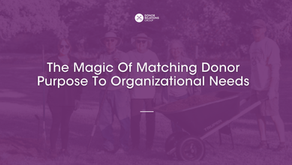8 Essential Best Practices for Donor Acknowledgments
- Lynne Wester
- Feb 7, 2024
- 4 min read

Our Donor Relations Group (DRG) team regularly speaks and writes about the importance of acknowledgments and the importance of an efficient process for getting them to donors in a timely manner. Acknowledgments are, after all, the first pillar of the 4 Pillars of Donor Relations.
Have you ever wanted a quick summary of our acknowledgment recommendations? Well, you’re in luck—we’ve assembled a list of our best practices just for you!
DRG's Acknowledgment Best Practices:
Do not include the gift amount in the acknowledgment. Why? Because an acknowledgment is a thank you note, NOT a tax receipt. If you take away one point from us, it should be that acknowledgments and receipts are different documents. While a receipt should contain a message of thanks, it is essential to remember it is transactional in nature. Donors should receive a receipt quickly, ideally within 72 hours of receiving the gift. The receipt should include the necessary tax language as well as the gift amount. It may help to think of a receipt as an automated response. Conversely, an acknowledgment should focus on gratitude and impact. There’s no need to include the nuts and bolts from the receipt. Instead, use this space to thank the donor for their generosity.
Speaking of generosity, we recommend you review your giving pyramid every few years to ensure time spent on your acknowledgment process is well spent. We want to ensure the time spent on custom acknowledgments is for the appropriate segment of donors. Highly personal acknowledgments should be saved for more significant gifts, while gifts of smaller amounts should receive less personalized messaging. You’ll need to review your giving levels (ex., how many donors made gifts of $250-$499 vs how many made gifts of $1000-$4999) to determine and adjust your process accordingly.
Think beyond the standard piece of 8 ½ x 11 paper. For example, postcards are an excellent way to acknowledge first-time gifts. Monarch or executive stationery will instantly provide a warmer, more personal touch to your thank-you notes. And let’s face it, when we use a full sheet of letterhead, we feel obligated to fill the space! We need to remember that “less is more” regarding the length of an acknowledgment. Keep it short!
Thank your donors in the manner they give. Beyond the standard sheet of letterhead, acknowledgments for gifts made online should receive digital acknowledgments. That’s right, emails and even—gasp—texts should be acknowledged in kind! While we realize it can be a significant pivot for many of us, succinct messaging, photos, and even videos are essential elements of digital acknowledgments. And if you’re looking for some inspiration, we’ve got great examples of acknowledgments of all kinds in our sample library.
In all acknowledgments – regardless of audience, paper size, or delivery method – be sure to use "You" more than "We" or "I." Remember that an acknowledgment is a thank you note to the DONOR and NOT a press release for our organizations. An acknowledgment is about the donor and their generosity, not what our organization is accomplishing—no matter how significant the accomplishments may be. That concept seems obvious, but it's often forgotten in day-to-day practice. Remember to move away from organizational jargon when crafting acknowledgment content, and warm up your acknowledgments with emotive words and stories.
Have templates or templated language at your disposal. Trust us when we say that templates can expedite your acknowledgment process exponentially. Templates must be refreshed a few times per year of course (monthly, quarterly, semi-annually, whatever works best for you), but isn't that far more efficient than creating new ways to say "thank you" for each gift? We're unaware of donors comparing acknowledgments with each other (the exception might be if they live in the same residence), so don't hesitate to implement templates. And a friendly reminder: you can use a first-time donor postcard again and again.
Do not thask. We repeat: Do. Not. Thask. You might be wondering what a thask is. Thasking is the unfortunate coupling of a thank you note and a solicitation, or “ask,” for another gift—a word coined by DRG founder, Lynne Wester. Another appeal can come later, but we must thank our donors before we go there. Thanking donors and showing them the impact of their gift should always be our priority before making the next ask.
Timeliness in your acknowledgment process is vital. Monitor your timeline from receiving the gift until the acknowledgment is sent. Ideally, you should send an acknowledgment within 5-7 days of the time of the gift. So, where are your trouble spots? We often see the review process as the step that takes too long. Employing templates, templated language, and different mediums like postcards and emails should help move your process along as the core messaging stays the same. Only the highly personalized acknowledgments need “more eyes” to review them, and likely not as many eyes as you may think.
Acknowledgments are a core function of donor relations, they should only account for 10-15% of our workload. How do your timeline and workload measure up?
Which of these best practices do you want to implement immediately at your organization? Which ones do you want to celebrate? We’d love to hear from you!
If you want to dive deeper into acknowledgment trends and best practices, check out Setting the Stage: 10 Acknowledgement Fundamentals for 2024. This on-demand webinar will teach you critical infrastructure needs, signatory best practices, how to establish tiering and thresholds, when to use digital vs. print, how to infuse storytelling that will resonate with your donors, and more!
For more inspiration and examples, browse through the 2023 Acknowledgment Swap—one of our many free resources!
By Jan McGuire





